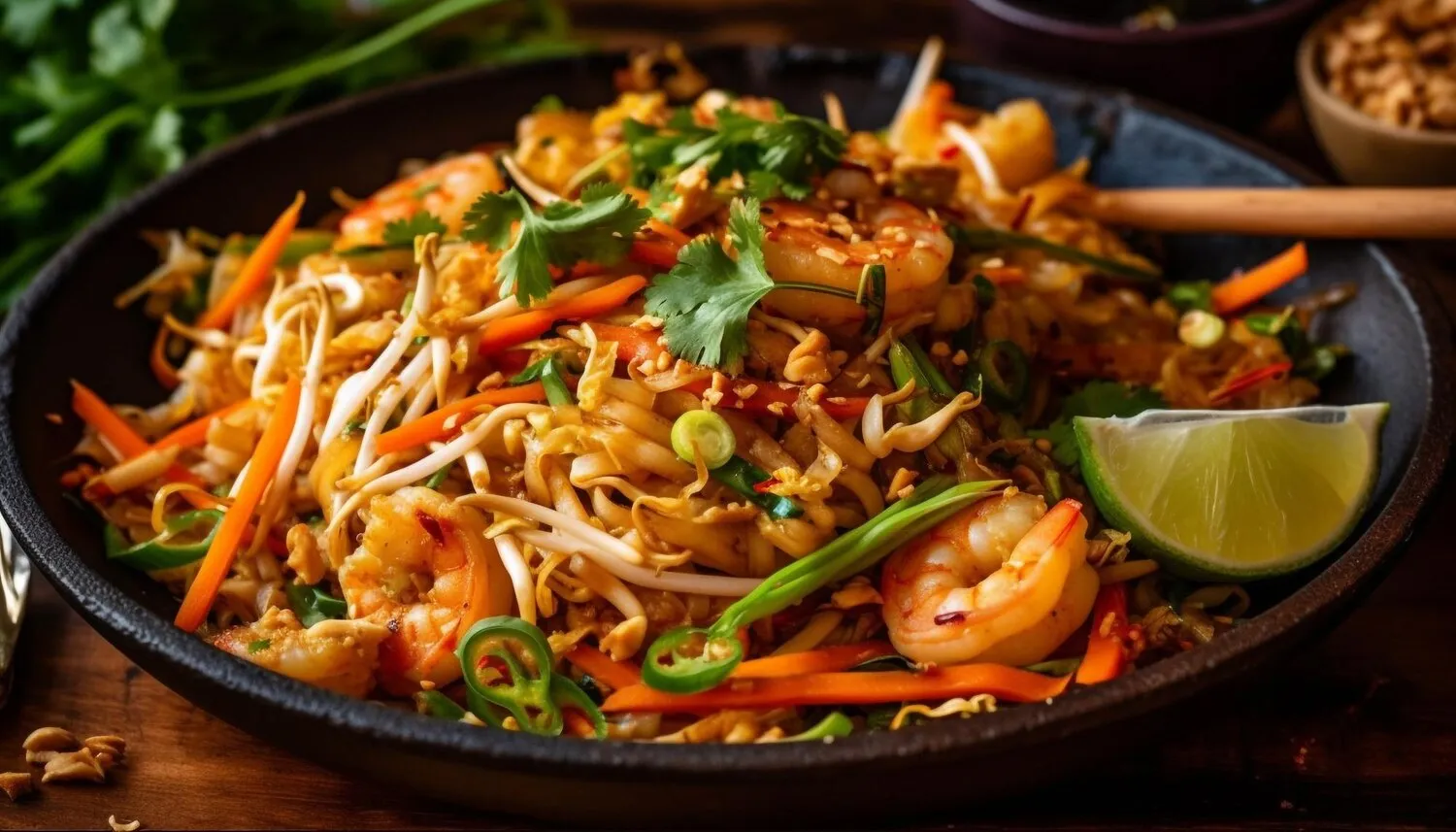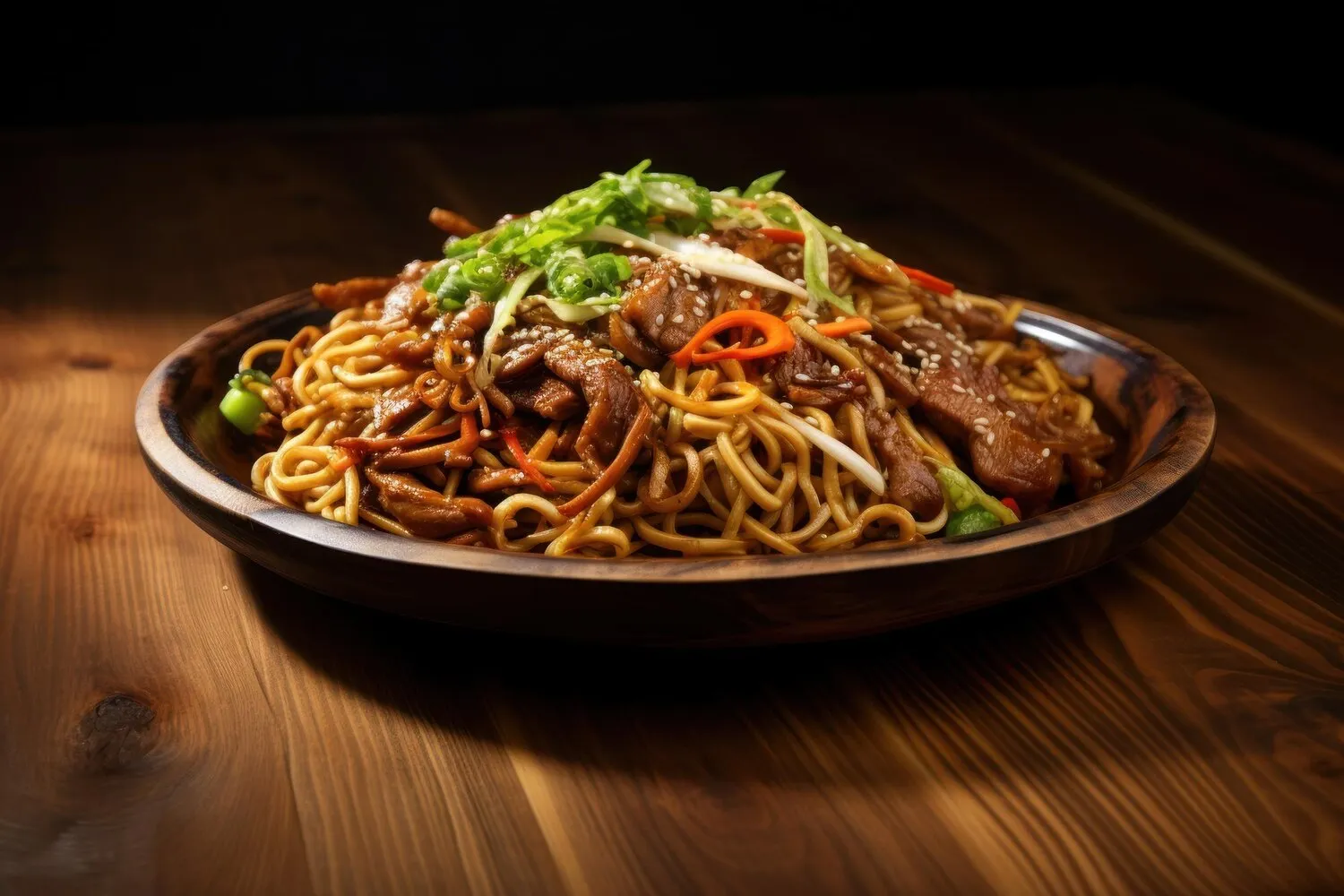
Pad Thai
Classic stir-fried rice noodles with shrimp, chicken, tofu, peanuts, bean sprouts, and egg in a tangy tamarind sauce.
Nutrition Facts
* The % Daily Value (DV) tells you how much a nutrient in a serving of food contributes to a daily diet. 2,000 calories a day is used for general nutrition advice.
Pad Thai's emergence is relatively modern, arising in the 1930s under Prime Minister Plaek Phibunsongkhram as part of a national campaign to promote Thai nationalism and reduce the country's reliance on rice. The dish was promoted as a national dish and encouraged to be sold by street vendors, utilizing ingredients readily available and affordable to the masses.
Pad Thai has become an iconic symbol of Thai cuisine, enjoyed both locally and globally. It represents a successful effort to establish a national identity through food and has become a staple of Thai street food culture.
National Identity
Pad Thai played a significant role in promoting Thai nationalism during the 1930s and 40s. Its creation and promotion were part of a government initiative to unify the country and reduce reliance on foreign goods.
Street Food Staple
Pad Thai is a quintessential Thai street food, readily available from countless vendors across the country. It offers an affordable and delicious meal for locals and tourists alike.
Global Ambassador
Pad Thai is one of the most well-known Thai dishes internationally, representing Thai cuisine and culture to a global audience. Its popularity has contributed significantly to the spread of Thai restaurants and culinary traditions worldwide.
Pad Thai boasts a complex flavor profile that is sweet, sour, salty, and savory, with a delightful interplay of textures.
The sweet element comes from palm sugar, while the sourness is derived from tamarind paste. Fish sauce contributes the salty and umami elements. The savory notes are enhanced by ingredients like garlic, dried shrimp, and tofu. The dish also offers a textural contrast with the softness of the noodles and egg, the crunch of peanuts and bean sprouts, and the chewiness of shrimp or chicken.
Tamarind Paste Quality
The quality of tamarind paste significantly impacts the overall flavor. Use good-quality tamarind pulp or paste for the best results.
Noodle Texture
Soak the rice noodles until they are pliable but not mushy. Overcooked noodles will become sticky and unpleasant.
Wok Hei
Use high heat to create 'wok hei,' a slightly smoky flavor that adds depth and complexity to the dish. A well-seasoned wok is essential for achieving this.
Ingredient Balance
Pay close attention to the balance of sweet, sour, salty, and savory flavors. Adjust the ingredients to your preference.
Explore additional Noodle dish dishes and restaurants
Explore Noodle dishDiscover top dining spots and culinary experiences in Namur.
Explore NamurLearn more about the food culture, restaurant scene, and culinary heritage of Belgium.
Explore Belgium
